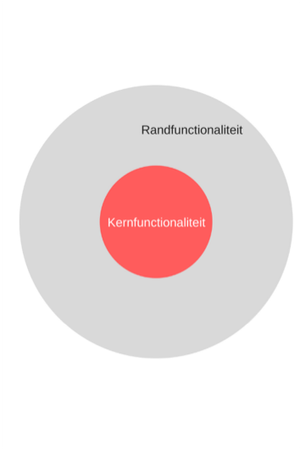
Tom Schenkenberg
February 21, 2017

Tom Schenkenberg
February 21, 2017

Now organisations are increasingly consciously making the switch from ‘business’ to ‘online business’, web applications and other software are becoming increasingly decisive for their success. When choosing between ‘custom or standard software’, a mix is becoming more and more interesting, but how do you find the perfect balance? Focus on your core functionality.
Due to the growing importance of internet technology for the success of organisations, IT managers and other decision-makers are increasingly faced with an important choice: do we opt for customisation or a standard solution? Both have advantages and disadvantages. Fortunately, it is not a choice between black or white. The ideal solution usually lies somewhere in the middle: a mix that exploits the advantages of both worlds.
Old prejudices - ‘customisation is expensive’ and ‘standard is cheap and limited’ - are abandoned. Especially because of the great importance of web and mobile apps. Then it’s not just about the ‘cheapest’ solution, but above all about the best solution for your business.
The old prejudices often don’t add up either. After all, by choosing a ‘cheap’ standard solution, for example, an organisation quickly comes up against the limits when configuring. Then extra costs still have to be incurred for the development of additional custom work. Or the organisation adjusts the requirements for use downwards.
For solutions that don’t directly affect your core business, that might work with a little creativity. But if it is a core functionality, that is very unwise. After all, the importance of internet technology is now crucial. And with standard software for your core functionality, it is difficult to distinguish yourself from all competitors with similar software.
To find the ideal combination between standard and custom software, choose ‘standard where you can’ and ‘custom where you have to’. But where does that balance lie in your organisation? At Ibuildings, we follow a clear strategy when we develop web or mobile apps for an organisation. We focus on the core of the business process that needs to be supported.
That unique and characteristic business process deserves customisation. To achieve this, ’the gap between reality and program code’ must be as small as possible. In this way, you get applications that perfectly match the business process that users have to deal with on a daily basis.

Our software architects zoom in on the real business problems that need to be solved. You first need to fully understand and isolate them. That’s the core domain that makes a company unique and creates value in the marketplace. Then developers can translate it into program code. For the core functionality, customization is the best choice. Generic solutions simply do not suffice. For (peripheral) functionalities (such as login, database, design, reporting, translations) standard software can be very suitable.
This approach has two decisive advantages:
These are decisive factors in developing cost-effective applications that are fully aligned with business processes. This results in better solutions that really fit your organisation and don’t have to be ‘more expensive’. Moreover, such an application has a higher return on investment (ROI) because an organization can excel better with its core business.